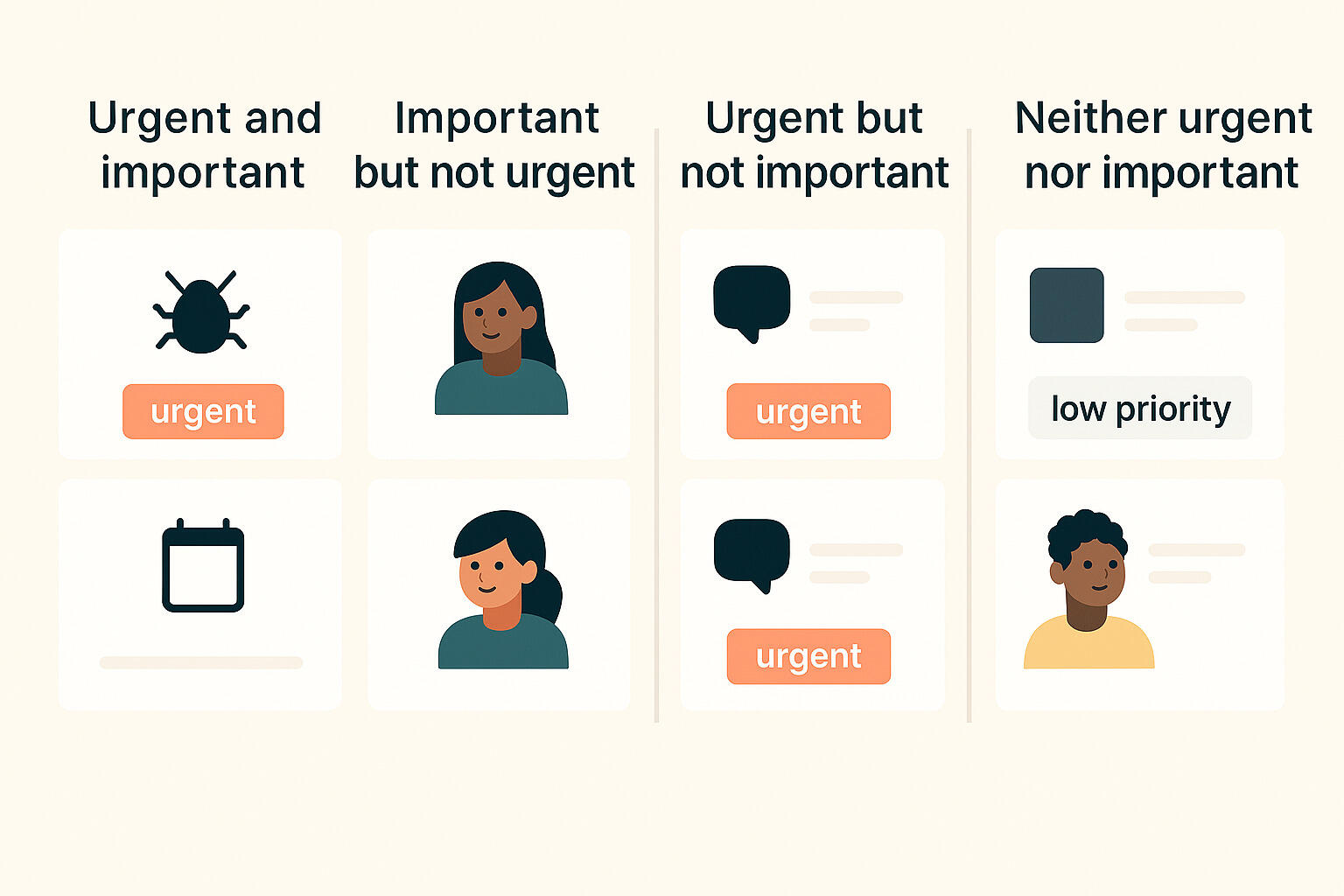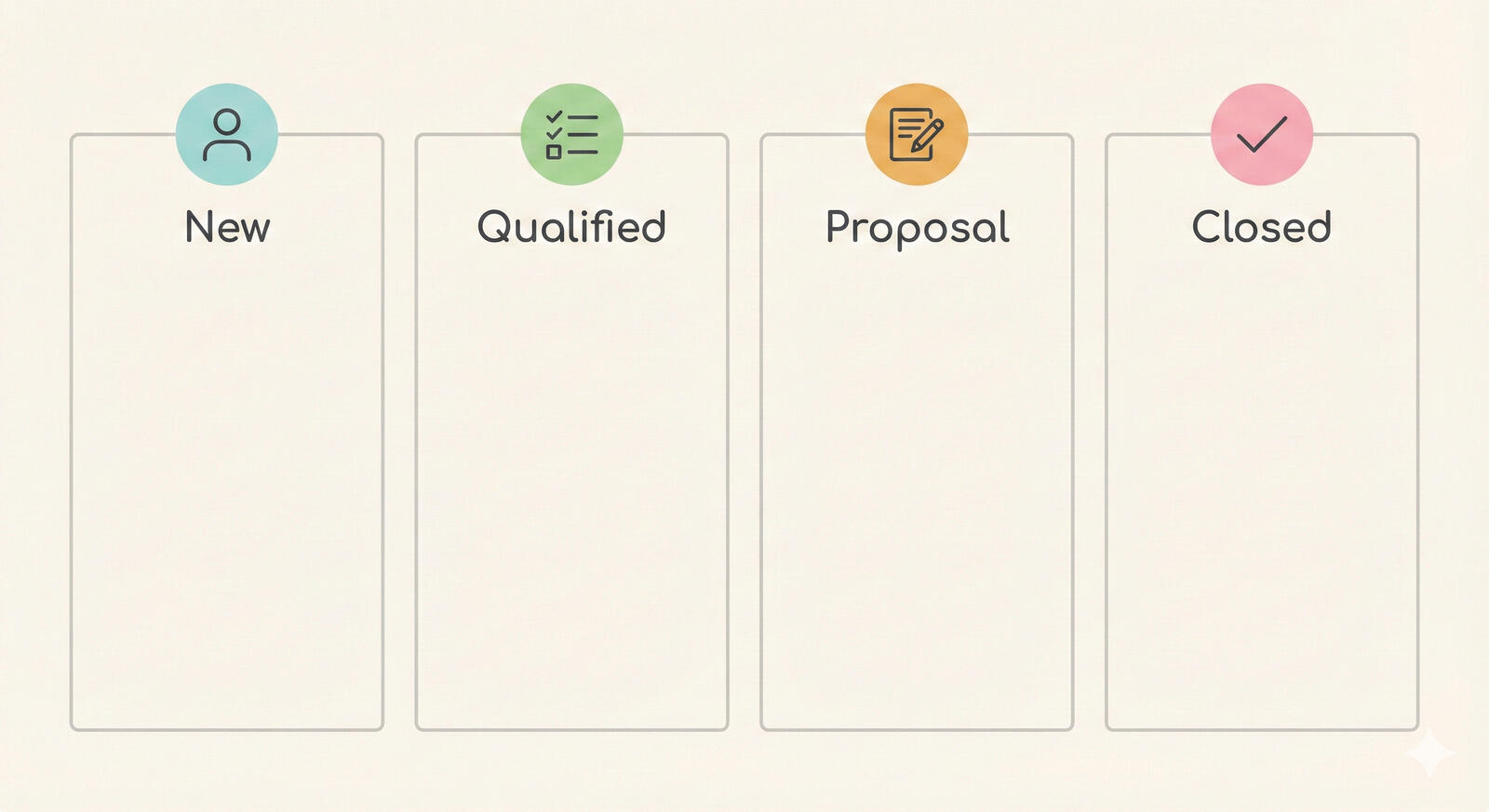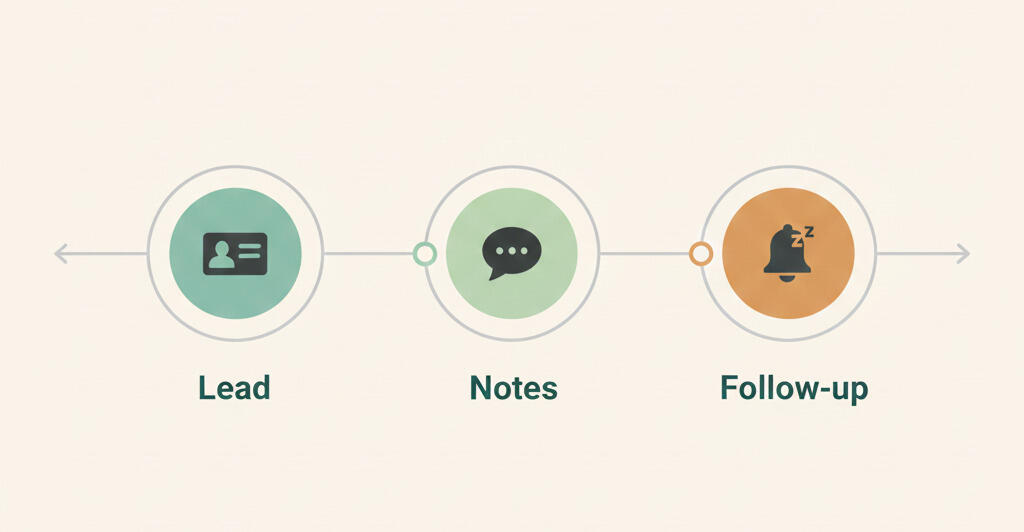A simple way to manage tasks with the Eisenhower matrix
Contents
Many teams struggle to stay on top of daily tasks. With constant notifications, shifting requests, and tight deadlines, it's easy to lose sight of what really matters. This often leads to missed work, stress, and scattered priorities.
The Eisenhower Matrix offers a practical way to bring order back to your task list. By organizing work into four clear categories based on urgency and importance, the method helps you focus on the tasks that actually drive progress. It stops you from reacting to everything and lets you take control of your time.
This guide is for team leads, freelancers, and businesses that want a simpler, clearer way to manage work. You'll learn how the matrix works, how each quadrant applies to real tasks, and how to use tools like Breeze to apply the method in day-to-day work. We'll also look at common mistakes and give tips to make the matrix part of your team's routine.

1. What is the Eisenhower Matrix?
The Eisenhower Matrix is a simple tool that helps you sort tasks by urgency and importance.
It splits work into four clear categories: urgent and important, important but not urgent, urgent but not important, and neither. This helps you with task management and stops you from reacting to every task.
President Dwight Eisenhower used this approach to stay focused on what mattered most during his career in the military and the White House. His method was built on separating true priorities from distractions.
Here's a quick example for each quadrant:
- Urgent and important: Fixing a website crash or responding to a major client issue.
- Important but not urgent: Planning a new product launch or mentoring a team member.
- Urgent but not important: Attending a last-minute meeting with no clear agenda.
- Neither urgent nor important: Browsing social media during work hours.
This structure gives teams a clearer view of their workload and helps them avoid spending time on tasks that don't support long-term goals.
2. Quadrants explained with real use cases
The Eisenhower Matrix helps teams sort tasks based on how urgent and how important they are. Each quadrant plays a different role in planning and execution. Below is a breakdown of all four, with examples.
Urgent and important
Tasks in this quadrant need immediate attention. These are the items that, if left undone, could cause real damage or delay. Common examples include resolving a bug that stops users from checking out on an e-commerce site, or replying to a client who flagged a serious issue before a deadline.
These tasks should be acted on first. In Breeze, teams can highlight urgent items with labels or move them to a high-priority list at the top of the board. Assigning owners and deadlines ensures they are handled quickly and visibly.
Important but not urgent
This quadrant holds the tasks that support long-term outcomes. They are important, but not time-sensitive. Examples include reviewing workflows, refining onboarding processes, or planning the next product cycle.
These types of tasks are often overlooked under pressure, even though they shape future success. In Breeze, users can schedule these with due dates or set recurring reminders to keep them from slipping. If your team is already applying the key success factors in project management, this quadrant is where many of those habits are built and reinforced.
This structure gives space to improve without the pressure of deadlines. Teams that revisit these regularly avoid last-minute chaos and maintain steady progress.
Urgent but not important
These are distractions that demand time but don't move the project forward. A common example is being pulled into a meeting with no clear goal. Another is getting flagged in a group email thread that doesn't need your input.
You can assign or delegate these tasks to someone else, or tag them with lower priority. That way, they stay visible without pulling attention away from higher-value work.
Not urgent and not important
These tasks do not need to be done and don't have much value. Scrolling through internal chat threads out of habit, tweaking designs after final approval, or organizing folders that no one uses are typical examples.
Breeze gives teams the option to log these tasks, but not prioritize them. Some teams skip them entirely or set up a "parking lot" list for items to revisit only if time allows.
By understanding what fits in each quadrant, teams can spend less time reacting and more time moving toward their actual goals.
3. Benefits of using the Eisenhower Matrix with Breeze
Using the Eisenhower Matrix helps teams make faster decisions and avoid constant firefighting. Instead of treating every task as urgent, teams learn to sort requests based on what actually matters. This lowers stress, improves focus, and creates space for strategic work that often gets ignored.
In Breeze you can use one board with four lists, each tied to a quadrant, or break it into multiple boards if you manage separate teams. Tasks can be tagged by urgency or priority, making it easier to stay aligned during weekly reviews or standups.

This structure also reduces decision fatigue. Repeated task switching and poor prioritization wear down focus. According to a Nature Human Behaviour study, up to 40% of research reports omit key experimental details due to rushed or biased decisions. Clear systems like the Eisenhower Matrix help avoid that kind of drift by supporting deliberate planning.
You can add structure by making tasks visible, sortable, and easy to reassign. When everyone sees what belongs where, the team moves faster with fewer surprises.
4. How to set up the matrix
The Eisenhower Matrix works best when it's simple and easy to update. You don't need a complex setup. Just create a clear structure that supports how your team already works. Breeze makes this easy by letting you organize tasks into lists and move them as priorities change.
Step 1: Create four lists. Set up four columns on your task board. Name each one by quadrant: Urgent and important, Important but not urgent, Urgent but not important, and Neither urgent nor important. This gives everyone a shared view of task priority.
Step 2: Add tasks based on urgency and importance. As tasks come in, sort them by these two traits. A critical bug fix belongs in urgent and important. Planning a new feature goes in important but not urgent. Talk it through if the priority isn't clear.
Step 3: Use labels or tags. Tags help you spot patterns. If quadrant three keeps filling up, your team may be stuck in distraction mode. Breeze lets you filter by tag to keep this visible.
Step 4: Assign owners and deadlines. Every task should have a name next to it. Add a deadline if needed. This keeps the matrix actionable and prevents it from turning into a list of forgotten ideas.
Step 5: Review weekly. Priorities shift. A low-priority task might become urgent. A task marked as urgent might no longer matter. A weekly check-in helps your team stay aligned. If you're already tracking projects with project boards, this fits right into your routine.
A simple setup like this gives your team a better grip on time and focus.
5. Common mistakes to avoid
One frequent mistake is treating everything as urgent. When teams react to every request immediately, they lose focus and waste time on tasks that don't move the project forward.

Another issue is ignoring long-term work. Tasks in the second quadrant, like strategy or process improvements, often get delayed until they become urgent. By then, it's harder to do them well.
Scope creep also plays a role. When new tasks are added without discussion, teams end up overwhelmed or misaligned. But not every change is bad. With a clear system, some changes can lead to a scope creep advantage, helping teams uncover better ideas or stronger outcomes. The key is reviewing and classifying changes regularly so that the matrix stays useful, not bloated.
6. Takeaway
The Eisenhower Matrix is only useful if applied regularly. Many teams begin with clear priorities but fall back into chaos once pressure builds. A steady review process helps keep things in check. When tasks are reviewed and sorted by urgency and importance each week, it's easier to stay on track.
Structured task prioritization also leads to better performance. Teams that prioritize effectively are 1.4 times more likely to outperform others. That improvement doesn't come from working longer hours, but from reducing wasted effort and keeping attention on the right tasks.
If your current system makes it hard to separate what's important from what's just noisy, try building your first matrix. With a clear view of each quadrant and a tool that lets you group, label, and track tasks over time, you'll spend less energy reacting and more time making progress.








